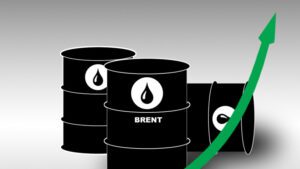
LLC “Kulinichi” (Kharkiv region), a major manufacturer of bread and bakery products, has begun construction of a bakery in the Lviv region with a capacity of up to 150 tons of bread per day, part of which will be sold for export, according to the Ukrainian diplomat’s Facebook page Mikhail Bno-Ayriyan.
At the same time, it is specified that investments in the enterprise will amount to EUR 20 million over two years, part of the equipment for the plant will be transported from the Kulinichi plant in the Kharkiv region.
In turn, the bread manufacturer on his official Facebook page confirmed that he had begun construction of an enterprise in the Lviv region, but stressed that this did not mean the closure of the plant in the Kharkiv region.
“Yes, we are really building a new plant near Lviv. We are not closing the plant in Kharkiv, we are not closing our retail outlets in Kharkiv (…) We will bake bread for you, no matter what,” the Kulinichi page says in social network.
LLC “Kulinichi”, operating in Ukraine since 1995, unites 8 bakeries of the Kharkiv region and plants of the Poltava, Donetsk and Kyiv regions.
Since 1999, LLC has been cooperating with the Slovenian enterprise Gostol-Gopan.

Oil prices are rising on Monday, traders are watching the situation in Libya, as well as the progress of negotiations on the Iranian nuclear deal.
Over the weekend, clashes between two armed groups took place in Tripoli, as a result of which more than 20 people were killed, Bloomberg reports. This raised fears that Libya is waiting for another full-scale conflict, as a result of which oil supplies to the world market will be reduced.
Iran, meanwhile, will continue to study US proposals for a nuclear deal until at least September 2, state news agency Nour News reported.
The cost of October futures for Brent oil on the London ICE Futures exchange by 8:15 am CST on Monday is $101.88 per barrel, which is $0.89 (0.88%) higher than the closing price of the previous session. As a result of trading on Friday, these contracts rose by $1.65 (1.7%) to $100.99 per barrel.
The price of futures for WTI oil for October in the electronic trading of the New York Mercantile Exchange (NYMEX) is $94.06 per barrel by this time, which is $1 (1.07%) higher than the final value of the previous session. By the close of the market on Friday, the value of these contracts increased by $0.54 (0.6%) to $93.06 per barrel.
As a result of the past week, Brent has risen in price by 4.4%, WTI – by 2.9%.
“Despite the hawkish stance of the world’s largest central banks, which means further hikes in interest rates and weakening economic growth, oil continues to rise in price as the balance of supply and demand speaks in favor of higher prices,” said James Whistler, managing director of Vanir Global Markets Pte in Singapore. “The possibility of OPEC production cuts remains, as Libya and Congo support the position of Saudi Arabia, while the problem of oil supplies from Kazakhstan also remains,” Bloomberg quoted the expert as saying.

The American super-heavy launch vehicle SLS (Space Launch System) with the Orion spacecraft, which is to fly to the Moon in a test unmanned mode as part of the Artemis 1 (Artemis-1) mission, will start on Monday from spaceport in Florida, according to NASA.
The launch is scheduled to take place in a two-hour time window that opens at 08:33 US East Coast Time (15:33 Moscow time) from Kennedy Space Center Launch Pad 39B.
As part of the Artemis 1 test mission, the Orion spacecraft will fly unmanned to the Moon, where it will orbit for several weeks. The ship will then return to Earth. The entire mission will last 42 days. The Orion descent capsule will splash down in the Pacific Ocean off the coast of California on October 10th.
The test flight should demonstrate the readiness of the SLS rocket and the Orion spacecraft for a manned mission.
The SLS launch vehicle developed by Boeing Corporation is currently the most powerful in the world. In the basic version, it is capable of launching 95 tons of payload into orbit. Promising modifications of the launch vehicle should provide an increase in carrying capacity up to 130 tons.
According to the plan of the American space agency, in 2024 it is planned to carry out the Artemis 2 mission, in which a crew of four astronauts will go to the moon. The manned spacecraft will have to fly around the Earth’s natural satellite. After a long space flight, the Orion descent ship with astronauts will splash down in the Pacific Ocean. As part of the Artemis 3 mission, which is currently scheduled for 2025, US astronauts will have to land on the surface of the moon.
The Artemis program was made public in September 2020. Its main goal is the return, 53 years after the last mission, of American astronauts to the lunar surface, the construction of a near-lunar station and the preparation of conditions for a possible colonization of the Moon in the future.
According to the American experts from The Planetary Society, NASA has been developing the SLS launch vehicle and the Orion spacecraft for 17 years. For these purposes, the agency spent about $50 billion.

From September 1, 2022, Ukrainian carriers will be able to travel to Moldova under new simplified rules, according to the official Facebook page of the Ministry of Infrastructure of Ukraine.
“After the signing of the “transport visa-free regime” with the countries of the European Union, Moldova remained the only state on our borders with which the permit regime for Ukrainian carriers was not completely abolished. Given the large volume of cargo that is now going towards Moldova, the signing of a bilateral protocol removes the risk of stopping our exports,” the ministry stressed.
The permit regime will be maintained for non-scheduled passenger traffic (next year, the parties will exchange 2,200 permits) and for traffic to or from third countries (Ukraine will receive 10,000 permits by 2023).
“Bilateral cancellation of permits for international freight transportation, the opening a few days ago of the Berezyne-Basarabeasca railway section, which has not been operating for more than 20 years, are excellent examples of cooperation in the transport sector, strengthening interaction between Ukraine and Moldova. Now our task is to make the most of new opportunities for strengthening the economies of our countries in the face of the threats posed by Russian military aggression and Russian policy in general,” Infrastructure Minister of Ukraine Oleksandr Kubrakov said.

The share of women in Ukrainian IT has tripled over the past 10 years and stands at 24% as of August 2022, the press service of GlobalLogic reported, based on an internal study of the company.
“According to GlobalLogic, 1,769 women work with the company in Ukraine, which is more than a quarter of all specialists. The average age of specialists is 33 years, but among IT specialists there are also women over the age of 60,” the company said.
According to GlobalLogic statistics, 81% of women in the IT field have technical specialties.
Most of the respondents started their career in the industry as a trainee or junior position, but now they have a professional level of senior, lead or even AVP (junior vice president).
According to the report, a third of the top leadership positions at GlobalLogic are held by women.
IT company “GlobalLogic Ukraine” is the largest software developer in Ukraine. It has offices and more than 4.5 thousand specialists in Kyiv, Kharkov, Lvov and Nikolaev.